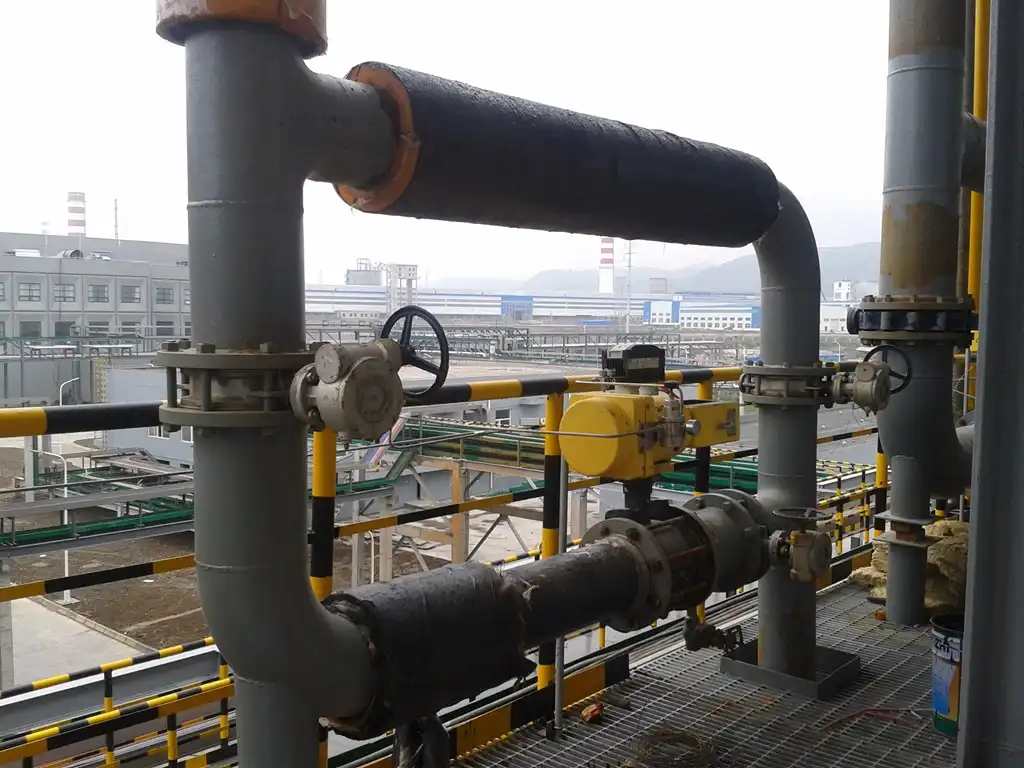Understanding the Role of Valves in Central Air Conditioning Systems
The Importance of Proper Valve Selection
Selecting the right valves for a central air conditioning system is paramount to its efficiency and performance. Valves serve as the gatekeepers of fluid flow, regulating the movement of refrigerant and water throughout the system. The choice of valve type can significantly impact energy consumption, maintenance requirements, and overall system longevity. Factors such as pressure ratings, temperature ranges, and flow characteristics must be carefully considered to ensure optimal valve selection. By choosing valves tailored to specific system requirements, HVAC engineers can minimize pressure drops, reduce energy waste, and enhance overall system efficiency.
Key Functions of Valves in Air Conditioning
Valves in central air conditioning systems perform several critical functions that contribute to efficient operation. These include flow control, pressure regulation, and isolation of system components. Flow control valves, such as butterfly valves, allow for precise adjustment of fluid flow rates, enabling the system to respond dynamically to changing cooling demands. Pressure regulation valves help maintain optimal system pressure, preventing issues like cavitation and ensuring smooth operation. Isolation valves facilitate maintenance and repairs by allowing specific sections of the system to be shut off without disrupting the entire operation. Understanding these key functions is essential for designing and optimizing air conditioning systems that operate at peak efficiency.
Impact of Valve Efficiency on System Performance
The efficiency of valves directly impacts the overall performance of central air conditioning systems. High-quality, well-designed valves minimize pressure drops and energy losses, allowing the system to operate more efficiently. For instance, butterfly valves with low-friction disc designs can significantly reduce the energy required to operate the valve, translating to lower pump power consumption. Additionally, valves with tight shut-off capabilities prevent leakage and unnecessary energy waste. By implementing efficient valve solutions throughout the system, HVAC professionals can achieve substantial improvements in energy utilization, leading to reduced operating costs and enhanced environmental sustainability.
Exploring Efficient Valve Types for Central Air Conditioning
Butterfly Valves: Versatile and Energy-Efficient
Butterfly valves have emerged as a popular choice for central air conditioning systems due to their versatility and energy efficiency. These valves feature a disc that rotates on a central axis, allowing for precise flow control with minimal pressure drop. The compact design of butterfly valves makes them ideal for installations with space constraints. Advanced butterfly valve designs incorporate features like eccentric discs and specialized seat materials to enhance sealing performance and reduce wear. The ability to achieve tight shut-off and provide accurate flow modulation makes butterfly valves an excellent choice for applications ranging from chilled water distribution to condenser water control.
Ball Valves: Reliable and Low-Maintenance
Ball valves offer reliable performance and low maintenance requirements, making them a valuable addition to central air conditioning systems. These valves utilize a spherical closure element that rotates to control flow, providing excellent sealing capabilities and low-pressure drop characteristics. The simplicity of the ball valve design contributes to its durability and longevity, reducing the need for frequent maintenance or replacement. In air conditioning applications, ball valves are often used for isolation purposes, allowing for quick and easy shut-off of system components. The quarter-turn operation of ball valves also makes them convenient for manual control when necessary.
Globe Valves: Precise Control for Optimal Efficiency
Globe valves excel in applications requiring precise flow control and are commonly used in central air conditioning systems for tasks such as balancing and throttling. The linear motion of the valve plug allows for accurate adjustment of flow rates, making globe valves ideal for maintaining specific temperature setpoints or managing pressure differentials. While globe valves may introduce higher pressure drops compared to other valve types, their ability to provide fine-tuned control often outweighs this drawback in certain applications. Advanced globe valve designs incorporate features like characterized plugs and low-noise trim options to further enhance their performance in air conditioning systems.
Implementing Efficient Valve Solutions in Central Air Conditioning
Strategic Valve Placement for Optimal Performance
The strategic placement of valves within a central air conditioning system is crucial for maximizing efficiency and control. Key locations for valve implementation include the chiller inlet and outlet, cooling tower bypass lines, and zone distribution points. Placing butterfly valves at the chiller connections allows for precise flow control and isolation when needed. Ball valves installed in bypass lines provide quick and reliable shut-off capabilities for maintenance or emergency situations. Globe valves positioned at critical balancing points enable fine-tuning of flow rates to ensure even distribution of cooling throughout the system. By carefully considering valve placement, HVAC designers can create systems that operate more efficiently and respond effectively to varying cooling demands.

Integrating Smart Valve Technology for Enhanced Efficiency
The integration of smart valve technology represents a significant advancement in central air conditioning efficiency. Smart valves equipped with electronic actuators and sensors provide real-time data on flow rates, pressure, and temperature, enabling more precise control and optimization of system performance. These intelligent valves can be seamlessly integrated with building management systems, allowing for automated adjustments based on occupancy patterns, weather conditions, and energy pricing. For example, smart butterfly valves can dynamically modulate flow rates to match cooling loads, reducing energy waste during periods of low demand. The incorporation of smart valve technology not only improves system efficiency but also facilitates predictive maintenance and fault detection, further enhancing the overall reliability of central air conditioning systems.
Maintenance Best Practices for Valve Longevity
Proper maintenance of valves is essential for ensuring long-term efficiency and reliability in central air conditioning systems. Regular inspection and servicing of valves help prevent issues such as leakage, sticking, or premature wear. For butterfly valves, this may involve checking seal integrity, lubricating moving parts, and verifying proper alignment. Ball valves benefit from periodic cycling to prevent seizing, while globe valves may require occasional seat replacement or stem packing adjustment. Implementing a comprehensive valve maintenance program, including scheduled inspections, cleaning, and lubrication, can significantly extend the lifespan of valves and maintain their optimal performance. Additionally, proper water treatment and filtration practices help prevent scale buildup and corrosion, which can negatively impact valve efficiency over time.
Conclusion
In conclusion, the selection and implementation of efficient valve types play a crucial role in improving the performance of central air conditioning systems. Butterfly valves, with their versatility and low-pressure drop characteristics, stand out as an excellent choice for many applications. However, a comprehensive approach that incorporates various valve types, including ball valves and globe valves, is often necessary to address the diverse requirements of modern HVAC systems. By strategically selecting and placing these valves, integrating smart technologies, and maintaining them properly, HVAC professionals can significantly enhance the efficiency, reliability, and sustainability of central air conditioning systems.
FAQs
1. What makes butterfly valves particularly suitable for central air conditioning systems?
Butterfly valves offer low-pressure drop, compact design, and precise flow control, making them ideal for efficient air conditioning operations.
2. How do smart valves contribute to system efficiency?
Smart valves provide real-time data and automated control, allowing for dynamic adjustments that optimize energy usage and system performance.
3. Are there specific maintenance requirements for butterfly valves in air conditioning systems?
Regular inspection of seals, lubrication of moving parts, and checking for proper alignment are key maintenance tasks for butterfly valves.
4. Can replacing old valves with more efficient types improve an existing system's performance?
Yes, upgrading to more efficient valve types can lead to significant improvements in system efficiency and energy savings.
5. How often should valves in a central air conditioning system be inspected?
It's recommended to inspect valves at least annually, with more frequent checks for critical components or high-usage areas.
Enhance Your Central Air Conditioning Efficiency with CEPAI's Valve Solutions
CEPAI Group Co., Ltd. specializes in high-quality valve manufacturing for various industries, including central air conditioning systems. As a leading supplier and manufacturer, we offer a range of efficient valve solutions, including advanced butterfly valves, that can significantly improve your system's performance. Our expertise in valve technology ensures that you receive products tailored to your specific needs. For more information on our valve products and how they can enhance your central air conditioning efficiency, contact us at cepai@cepai.com.

References
Johnson, M. (2022). Advanced Valve Technologies in HVAC Systems. Journal of Building Services Engineering, 45(3), 217-230.
Smith, A., & Brown, R. (2021). Efficiency Improvements in Central Air Conditioning: A Comprehensive Review. Energy and Buildings, 213, 109823.
Lee, K., et al. (2023). Smart Valve Integration for Optimized HVAC Performance. Automation in Construction, 146, 104490.
Wilson, D. (2020). Valve Selection Criteria for Modern Air Conditioning Systems. ASHRAE Journal, 62(9), 12-18.
Chen, Y., & Davis, L. (2022). Maintenance Strategies for Long-Term Valve Efficiency in HVAC Applications. Facilities, 40(13/14), 834-849.
Rodriguez, E. (2021). Comparative Analysis of Valve Types in Central Cooling Systems. International Journal of Refrigeration, 128, 42-54.

_1746598525968.webp)



